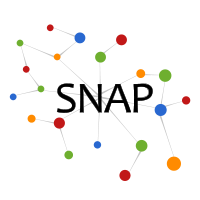Learning Large-scale Subsurface Simulations with a Hybrid Graph Network Simulator
We introduce Hybrid Graph Neural Simulator (HGNS), a data-driven surrogate model for subsurface fluid simulation. It is the first fully machine-learning-based subsurface model applied to realistic 3D scenarios with up to 1.1 million cells per time step (two orders of magnitude higher than prior models). It reduces the inference time up to 18 times compared to standard subsurface simulators, and outperforms other learning-based models by reducing long-term prediction errors by up to 21%.
Method
Subsurface simulations use computational models to predict the flow of fluids (e.g., oil, water, gas) through porous media. These simulations are pivotal in industrial applications such as petroleum production, where fast and accurate models are needed for high-stake decision making, for example, for well placement optimization and field development planning. Classical finite difference numerical simulators require massive computational resources to model large-scale real-world reservoirs. Alternatively, streamline simulators and data-driven surrogate models are computationally more efficient by relying on approximate physics models, however they are insufficient to model complex reservoir dynamics at scale. Here we introduce Hybrid Graph Network Simulator (HGNS), which is a data-driven surrogate model for learning reservoir simulations of 3D subsurface fluid flows. To model complex reservoir dynamics at both local and global scale, HGNS consists of a subsurface graph neural network (SGNN) to model the evolution of fluid flows, and a 3D-U-Net to model the evolution of pressure. HGNS is able to scale to grids with millions of cells per time step, two orders of magnitude higher than previous surrogate models, and can accurately predict the fluid flow for tens of time steps (years into the future).
To improve long-term prediction accuracy, we develop multi-step rollout during training. To address that the state size is too huge and cannot put inside a single GPU, we introduce sector-based training, with partitions the full grid into overlapping sectors (as subgraphs) and randomly combine minibatch of sectors as training examples.
Using an industry-standard subsurface flow dataset (SPE-10) with 1.1 million cells, we demonstrate that HGNS is able to reduce the inference time up to 18 times compared to standard subsurface simulators, and that it outperforms other learning-based models by reducing long-term prediction errors by up to 21\%.

Sample visualization of rollout of (over 20 months):

For more detailed methods and results, please see the paper.
It is also included in a talk given at the DDPS seminar at Lawrence Livermore National Laboratory (0min-25min).
Datasets
The datasets used by our experiments is SPE10.Contributors
The following people contributed to HGNS:
Tailin Wu
Qinchen Wang
Yinan Zhang
Rex Ying
Kaidi Cao
Rok Sosič
Ridwan Jalali
Hassan Hamam
Marko Maucec
Jure Leskovec
References
Learning Large-scale Subsurface Simulations with a Hybrid Graph Network Simulator. T. Wu, Q. Wang, Y. Zhang, R. Ying, K. Cao, R. Sosič, R. Jalali, H. Hamam, M. Maucec, J. Leskovec. In Proceedings of the 28th ACM SIGKDD Conference on Knowledge
Discovery and Data Mining (KDD ’22), August 14–18, 2022, Washington, DC, USA.



